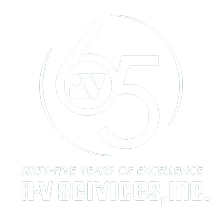When you’ve been around for 60+ years, you’ve seen a lot of change. Take our industry, for example. From the days of bulky cathode ray tubes to today’s razor-thin, crystal-clear 8K displays, it’s safe to say that technology has been on a wild ride! Introduced in 2017, the latest chapter in the saga of AV innovation is here to stay: SMPTE 2110, a broadcast-grade technology making waves (pun intended) in the AV integration industry.
Like any new tech, today’s versions will change tomorrow, and not every solution is right for every project. Today, we’re diving into the pros and cons of SMPTE 2110, and how this new technology is shaking things up for AV integrators like us.
Wait…What exactly is SMPTE 2110?
In case you’re not familiar with the buzzword, SMPTE 2110 (developed by the Society of Motion Picture and Television Engineers) is a suite of standards that allows for the transport of separate video, audio, and metadata streams over IP networks. Gone are the days of lumping all these signals together; now, each can be sent independently, offering flexibility, efficiency, and better control.
And, as with any new technology, there are both positives and negatives. So, let’s break down the pros and cons of adopting SMPTE 2110.
The Pros: Why We’re Excited
- Unparalleled Flexibility:One of the biggest advantages of SMPTE 2110 is that it unbundles audio, video, and metadata streams. Think of it as a fancy buffet where you can pick exactly what you want, when you want it. In the AV integration world, this means we have more control over signal routing. Want to change just the audio without touching the video? No problem! You can even adjust different aspects of your setup in real time.
- Scalability Like Never Before:For decades, expanding AV systems meant a maze of cables, adapters, and converters. With SMPTE 2110, everything happens over an IP network, meaning adding new equipment or upgrading systems is as simple as plugging into your network. This scalability is a game-changer, whether it’s for a large-scale broadcast facility or a corporate AV setup.
- High-Quality, Uncompressed Video:When it comes to video, quality is everything. SMPTE 2110 supports uncompressed, high-definition video, making it perfect for environments that need crystal-clear visuals—like sports arenas, live broadcasts, and corporate presentations.
- Efficient Infrastructure:SMPTE 2110 allows us to consolidate all AV traffic onto a single network. No more running separate cables for each signal type, and no more dealing with signal degradation over long distances. For complex setups, this not only reduces physical clutter but also makes troubleshooting easier. Plus, everything integrates smoothly into existing IT networks, making life simpler for both AV and IT departments.
- Future-Proofing for Tomorrow:Technology moves fast. SMPTE 2110 positions us to be ready for whatever’s coming next, whether that’s 8K video, immersive audio, or even virtual reality. By adopting this standard now, we’re future-proofing our integrated collaboration spaces, ensuring that we’re ready for the latest innovations without a complete overhaul needed every few years.
The Cons: (Small) Bumps in the Road
- High Initial Investment:While SMPTE 2110 offers long-term benefits, the initial investment in new equipment can be high. From specialized IP switches to upgrading legacy gear, adopting this technology requires a financial commitment upfront. For clients with tight budgets, this could be a hurdle.
- Complexity of Implementation:A-V Services is no stranger to complex systems. But SMPTE 2110 requires a solid understanding of IP networking—something that wasn’t always part of the traditional AV toolkit. There’s a learning curve involved, especially for teams used to older SDI-based setups. This means retraining staff, upgrading knowledge, and in some cases, bringing in IT SMEs to ensure a more seamless integration into your environment.
- Bandwidth Demands:With all those beautiful uncompressed streams of video and audio, SMPTE 2110 is hungry—hungry for bandwidth. Not every network can handle the load, so upgrading network infrastructure may be necessary, especially for high-traffic environments like live broadcasting or large events.
- Synchronization Challenges:In an ideal world, everything would be perfectly in sync. But in reality, transporting multiple independent streams (video, audio, metadata) can sometimes result in sync issues if the network isn’t up to speed. It’s a challenge to ensure everything arrives at the right time, especially when dealing with large amounts of data over an IP network.
- Limited Compatibility with Legacy Systems:Not all existing AV gear is ready to play nice with SMPTE 2110. Legacy systems, especially those still relying on SDI, may need to be replaced or upgraded to work in an IP-based environment. This can add complexity (and cost) when integrating newer technologies into older setups.
The Verdict: SMPTE 2110 is Here to Stay
While SMPTE 2110 isn’t without its challenges, the pros far outweigh the cons for us. As a company with a 60+ year legacy, we’ve seen how vital it is to embrace the future, even when there’s a learning curve involved. The flexibility, scalability, and high-quality results we’re able to deliver with SMPTE 2110 make it well worth the investment and effort. For our clients, this means better experiences and outcomes.
SMPTE 2110 might have a few bumps in the road, but for A-V Services and our amazing portfolio of customers, it’s exactly the kind of technology we’re excited to champion. Contact Us to find out more.
